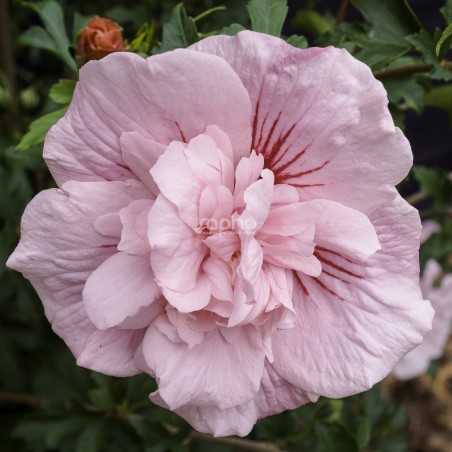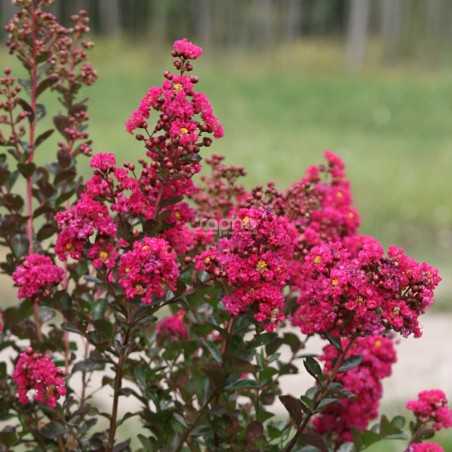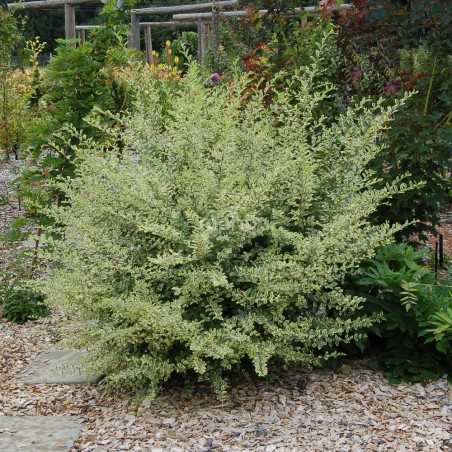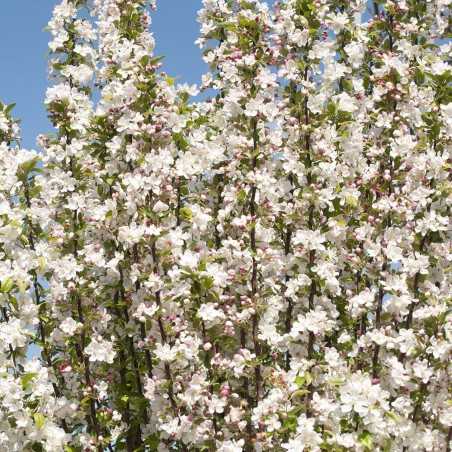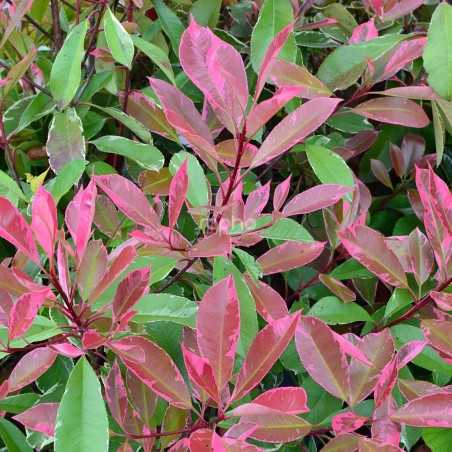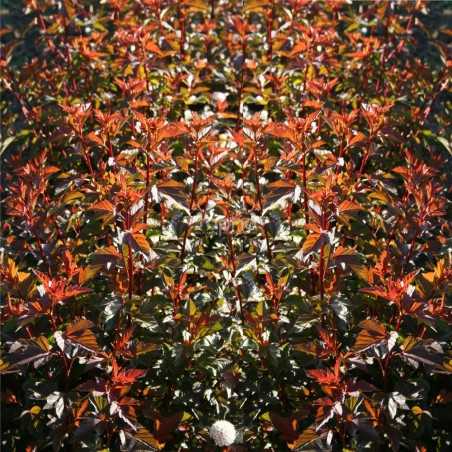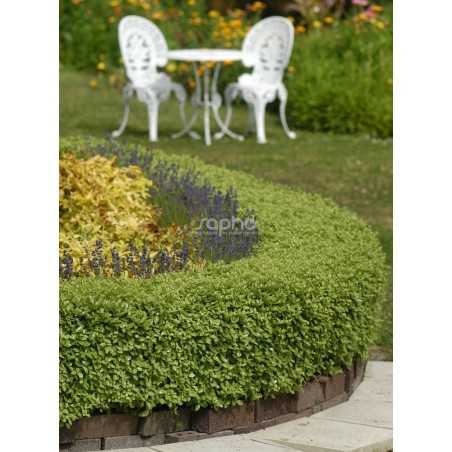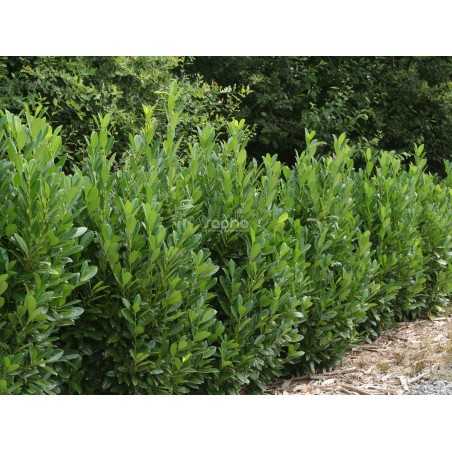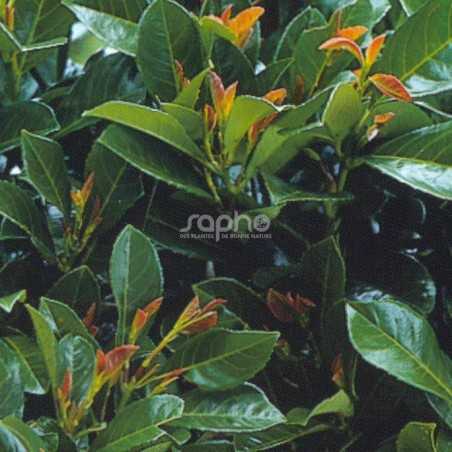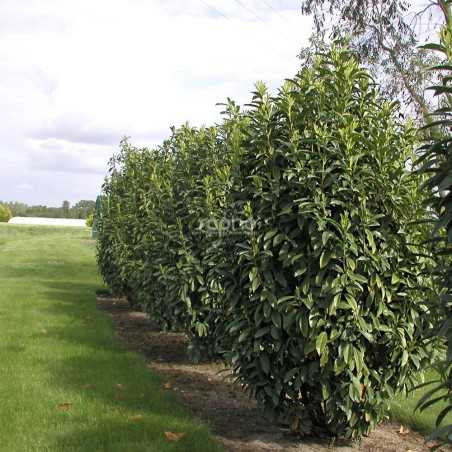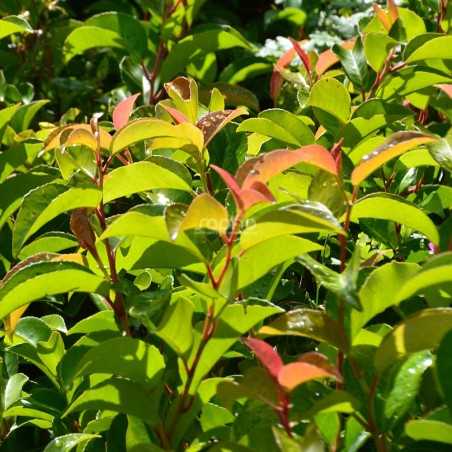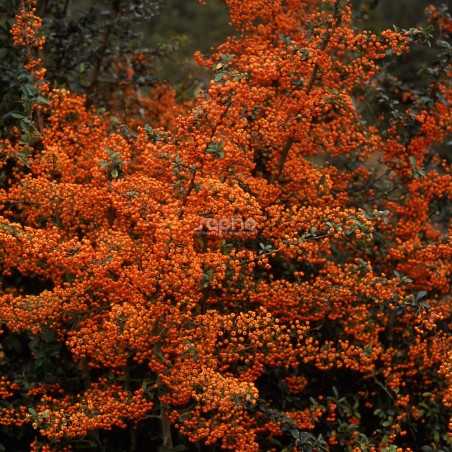The charm of the CHIFFON range and pink flowers with a red heart
From July to September, LAVENDER CHIFFON has flowers with fine, lavendar coloured petals, the base of which are streaked with red. This selection is suitable as a single plant or in shrub borders and associates harmoniously with the other varieties of the CHIFFON range, a valued asset to the summer decor of any garden.
Categories
Menu
Nos stars
The fuchsia coloured lilac of the INDIYA CHARMS® rangeThe young red shoots make room for big shiny leaves, purple green to bronze, depending on the conditions. The early flowers bloom as very thick fuchsia coloured, nearly red thyrses.BRAISE D'ÉTÉ®, CAMAÏEU D'ÉTÉ®, FUCHSIA D'ÉTÉ® and VIOLET D'ÉTÉ® are the four varieties of the INDIYA CHARMS® range of our program. They offer pretty shades of mauve, violet, pink and red, adding bright summer colours to shrub borders and mixed hedges. Stem-grafted, in pots or in the ground, they decorate any entrance, terrace or, more traditionally, can be planted in a row.They can also be trained along a south facing wall.
Luminous shrub, MUSLI® is noticeable from a distance.MUSLI® was discovered and selected as a seedling of Ligustrum ibota in Switzerland.Leaves are opposite, evergreen to semi-evergreen and remarkable for their lasting variegation, highly resistant to the sun. The young shoots are light yellow, turning white with time. The foliage is more or less variegated, light grey-green with creamy white edges, sometimes so wide that they cover the entire width of the leaf.When young, the shrub is of bushy and spreading growth with arching branches. Then MUSLI® forms an even bush with a dense centre. It is of moderate growth.In early summer, the shrub will produce clusters of fragrant white tubular, nectar bearing flowers, turning into blue-black berries, which attract the birds.This shrub tolerates cutting back and is suitable in topiary, in a monospecific or a mixed hedge. Together with other shrubs or in a pot is is very remarkable by its particularoy bright foliage.Trophies: Bronze medal at PLANTARIUM 2011 (Boskoop - NETHERLANDS)
Naturally a STAR since its creation.
This tree is of semi-spreading growth, reaching a height of 3 to 4m in ten years and has a harmonious shape, which it keeps without the necessity of pruning. Its foliage is green.
In April, 'Evereste' covers itself in bright pink flower buds, which bloom as pure white bouquets of flowers. The quality and the abundance of its pollen make it an ideal pollinator, precious for fruit growers (in proportion of 6 - 8% of all varieties of early or semi-early flowering).
The cherry sized fruits are orange with thin red stripes. They apprear in autumn and have the particularity to last well into winter.
'Evereste' has also been chosen by the INRAE selectors for its resistance to the major diseases such as fire blight, scab and mildew.
Nearly a million plants have been sold in Europe since its creation in 1974.
Its ornamental qualities, its reasonable dimensions and its easy care make it an excellent small urban tree if grown full standard; in clumps it is very valuable in the composition of flowering hedges and in shrub borders.
Beautifully mixed colours and an upright and regular formIts variegated foliage brings colour throughout the year. Photinia Louise has also been selected for its vigorous, erect growth and its ample vegetation that's regular, compact and dense. Photinia Louise is a shrub with persistent leaves and changing colours. In spring and autumn the young shoots are bright red spotted with pink.The developing leaves become thick and green, spotted wih creamy white. Its flowers, in May, are quite discreet, forming creamy white umbels. Upkeep is easy as it needs little pruning other than that required by the garden. In a hedge, a mixed bed or as a solitary shrub, 2 to 3 m high, Photinia Louise will enliven a garden throughout the year.
In springtime light, pretty copper shimmering foliage.This shrub is remarkable for its dense, deciduous jagged foliage, with its original orange copper shades in spring, turning to purple in summer and autumn. It prefers a sunny position to develop its beautiful colours.It has bushy habit, dense, stocky with strong, straight branches.Small balls of white flowers bloom from May to June. They are followed by red fruits in summer.DIABLE D'OR® suits well in mixed free hedges. Its copper shimmering in springtime, turning to purple later on makes it very precious for creating seasonal variations in the colours of the hedges foliage. The flowers and fruit add to its ornamental value.
Recommended for its low, naturally ball shaped growthThis cultivar originates from New Zealand.?Golf Ball? has a very round shape, not more than 1 m in dimension. It grows rapidly and stands out by its dense branches from the base upwards.Its evergreen foliage is light green.Discrete violet-brown flowers appear in Mai and June. The have a scent of honey but are of no decorative interest. 'Golf Ball' resists rather well to drought, and to temperatures of -5 to -10° C. It is excellent for the sea side because it accepts mist and wind.Recommended for small areas and low hedges, it is also suitable for pots and as topiary, like box.
A hardy selection with well-branched growth, for a maintenance-free hedge.This variety, coming from a Prunus laurocerasus 'Otto Luyken' seedling, was selected for its rapid growth and its well branched and upright habit, resembling a compact flame.It has few flowers in spring, and therefore only a little fruit afterwards.Rustic evergreen, particularly resistant to disease, not needing pruning, 'Greentorch' is an ideal variety for a monospecific hedge without worries.
Little springtime vulcanos for a low hedge.This variety of laurel with elegant branches naturally reaches a height of about 2 m and a spread of 1.50 m, all the while keeping its compact shape. It is of medium to slow growth.The coppery young shoots are decorative and contrast well with the shiny dark green foliage, which is evergreen.The creamy white flowers in May are followed by deep violet berries.ETNA® tolerates pruning and is recommended for the composition of moderate sized hedges (up to 0.80 m). Mixed with other shrubs, it brings an evergreen touch to beds. It can also be used in containers.Trophies: Gold medal at the Plantarium 1994. (Boskoop - NETHERLANDS)
For a naturally narrow and hardy hedge.This Prunus laurocerasus has been cultivated in Switzerland for its erect and narrow growth. It only needs light pruning.It reaches a height of 3,50 m and a width of 1.00 m when free growing.The foliage is shiny dark green, quite elongated and resists well to low temperatures.GENOLIA® does not thin out at the base and can stand the weight of snow thanks to its erect and strong branches.It has discrete flowers and the fruits are not very abundant.This variety is ideal for a narrow hedge.Trophies: Silver Medal at PLANTARIUM 2005 (Boskoop - NETHERLANDS)
Worth a try: a new evergreenThis new evergreen is an asset for the producer: its growth is vigorous and it forms very well. The young shoots offer a pretty bronze shimmer, later the foliage turns bright light green, which contrasts with the red petioles. In the autumn it turns bronze green.The slightly flared and drooping shape as well as the small and curled leaves give the shrub a light and natural silhouette.Very hardy for a Prunus azorica. Ideal for the revival of hedges!
Hardy Pyracantha of the SAPHYR® range with orange berries.This variety has all the characteristics of the SAPHYR® range.SAPHYR® Orange 'Cadange', fast growing, has a profusion of big bright orange berries from September onwards, lasting the best part of the winter.

